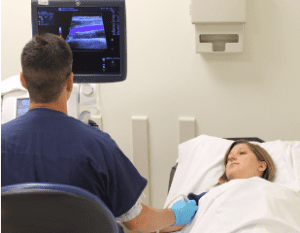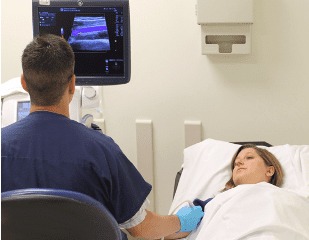Background:
Neuromuscular ultrasound focuses on primary diseases of nerve and muscle. High resolution ultrasound allows physicians to study peripheral nerves to evaluate neuromuscular diseases. The information these tests provide will offer physicians a new insight and more details to create a treatment plan that addresses a patient’s specific symptoms.
Who performs these tests?
These tests must be performed by highly specialized physicians or radiologists, with extra training in clinical neurophysiology or neuromuscular diseases. Both, Dr Yono and Dr Kashouty have subspecialty training and are highly qualified to perform these procedures.
 Why is the test performed?
Why is the test performed?
Ultrasound technology is rapidly evolving and the variety of neuromuscular diseases is expanding. The use of neuromuscular ultrasound is a painless, noninvasive and cost-effective technique. It is a safe imaging modality. It has multiple advantages over other imaging methods including relative portability, high resolution, lack of ionizing radiation and short test duration. Ultrasound can be used for the diagnosis of peripheral nerves disorders related to compression neuropathies, such as carpal tunnel syndrome, ulnar neuropathy and peroneal neuropathy, or any trauma to the nerve and muscle. It can provide information about the type and severity of the lesion. It is also an ideal modality for performing peripheral nerve block.
How is the test performed?
Evaluation of the peripheral nervous system with ultrasound is typically accomplished with a high-frequency (12-18 MHz) linear array transducer. During the procedure a probe will be placed along the wrist in order to take images. Nerve measurements, using the caliber built into the ultrasound device, are often obtained during the assessment of entrapment neuropathies. The structure of interest will always be imaged in multiple distinct planes, cross sectional and sagittal. The patient will either be supine or seated, with the arms resting on the lap or a pillow across the lap.
Test preparation:
There is no specific test preparation. The study is very short in duration. The patient generally will be ready to go home immediately following the test.




